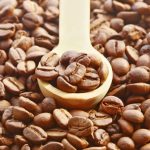1. The Basics of Espresso Pressure
When it comes to making a great espresso, pressure is everything. You might have heard the term “9 bars of pressure” thrown around in coffee conversations, but what does that actually mean? Lets break it down in simple terms.
In espresso machines, pressure refers to the force used to push hot water through finely ground coffee. This high-pressure process is what separates espresso from regular drip coffee. The standard for brewing espresso is 9 bars of pressure — thats about nine times the normal atmospheric pressure at sea level.
Why Is Pressure Important?
Pressure plays a crucial role in how espresso is extracted. It affects how quickly water moves through the coffee grounds and how much flavor, aroma, and oils are pulled from them. Too little pressure, and your espresso will be weak and under-extracted; too much pressure, and it can taste bitter or harsh.
How Pressure Affects Your Espresso
| Pressure Level | Extraction Result | Taste Profile |
|---|---|---|
| < 9 bars | Under-extracted | Sour, weak, watery |
| 9 bars (optimal) | Balanced extraction | Rich, full-bodied, flavorful |
| > 9 bars | Over-extracted | Bitter, overly strong |
The Role of Consistent Pressure
A good espresso machine maintains steady pressure throughout the brewing process. Inconsistent pressure can lead to uneven extraction — some parts of the coffee puck may get over-extracted while others are under-extracted. Thats why quality machines focus on delivering consistent 9-bar pressure every time you brew.
Understanding how pressure works in your espresso machine helps you appreciate the science behind your daily cup and gives you more control over taste and quality.
2. What Does 9 Bars Actually Mean?
When we talk about espresso machines and pressure, “9 bars” is the golden standard you’ll hear over and over again. But what exactly does that mean? Let’s break it down in everyday terms.
Understanding Pressure: What Is a Bar?
A “bar” is a unit of pressure. One bar equals the atmospheric pressure at sea level, which is approximately 14.5 pounds per square inch (psi). So when your espresso machine pumps water through coffee grounds at 9 bars of pressure, its pushing with nine times the pressure of the atmosphere at sea level.
Pressure Comparison Table
| Pressure | Equivalent in PSI | Context |
|---|---|---|
| 1 bar | 14.5 psi | Atmospheric pressure at sea level |
| 3 bars | 43.5 psi | Car tire pressure range |
| 9 bars | 130.5 psi | Standard espresso extraction pressure |
| 15 bars+ | 217.5+ psi | Max output of some home espresso machines (not always used) |
Why 9 Bars Became the Espresso Standard
The use of 9 bars as the ideal brewing pressure dates back to mid-20th century Italy with the development of lever-driven espresso machines. These early machines relied on manual levers to generate pressure, and they could consistently reach around 8–10 bars during extraction. Over time, manufacturers found that 9 bars struck a balance between flavor extraction and equipment durability.
This became the sweet spot for creating that rich crema and balanced shot of espresso we know and love today. Its enough force to extract oils, flavors, and aromatic compounds from finely ground coffee without over-extracting or burning it.
The Role of Pump-Driven Machines Today
Modern espresso machines use electric pumps—usually rotary or vibratory—to achieve consistent pressure. While many machines advertise higher max pressures like 15 or even 19 bars, most still extract shots at around 9 bars because thats what delivers optimal flavor and texture.
Key Takeaway:
Nine bars of pressure equals about 130 psi—enough to brew a delicious espresso shot by extracting the right balance of flavors from the coffee grounds. Its not just a random number; its based on decades of tradition and practical experimentation by coffee professionals worldwide.

3. The History Behind 9 Bars
To really understand why 9 bars of pressure is the standard for espresso machines today, we have to take a trip back in time—specifically to early 20th-century Italy. Espresso, as we know it, was born out of a desire for speed and intensity in coffee brewing. Before that, making coffee took several minutes. But Italians wanted something faster and more concentrated—enter the espresso machine.
The Birth of Pressure-Based Brewing
In 1901, Luigi Bezzera patented one of the first espresso machines. It used steam pressure to force water through finely ground coffee, which produced a small, strong cup quickly. However, this method only reached about 1.5 to 2 bars of pressure—not enough to create the crema-rich espresso we’re familiar with today.
Achille Gaggia and the Game-Changer
The breakthrough came in 1947 when Achille Gaggia introduced a lever-operated espresso machine. This design allowed baristas to manually generate higher pressure—around 8 to 10 bars—by pulling a lever that forced water through the coffee grounds using a piston system. This invention led to the creation of crema and marked the beginning of modern espresso.
Why 9 Bars Became the Standard
Over time, manufacturers began calibrating their machines based on Gaggia’s model. Through trial and error, they found that around 9 bars of pressure consistently produced optimal extraction—balancing flavor, body, and crema. As automatic pump-driven machines replaced manual levers in the mid-20th century, engineers standardized 9 bars as the target pressure for consistent results across different machines and environments.
Pressure Comparison Table
| Machine Type | Typical Pressure | Key Characteristics |
|---|---|---|
| Steam-Driven (Early Models) | 1.5–2 Bars | Low pressure, bitter taste, no crema |
| Manual Lever (Gaggia Style) | 8–10 Bars | High control, rich crema, balanced flavor |
| Pump-Driven (Modern) | 9 Bars (Standard) | Consistent pressure, reliable extraction |
The Italian Influence on Global Coffee Culture
Italy didn’t just give us great pasta—they also shaped how the world drinks coffee. The innovations by Bezzera and Gaggia laid the foundation for what would become an essential part of café culture worldwide. Today’s machines still reflect these roots, with many high-end models proudly advertising their ability to deliver steady 9-bar pressure as a nod to tradition and quality.
The next time you sip on an espresso with that creamy layer on top, remember—it all started with some clever Italian engineering and a whole lot of experimentation with pressure.
4. Do You Really Need 9 Bars?
When it comes to espresso machines, 9 bars of pressure has become the gold standard—but is it always the best option? Let’s break down when 9 bars is ideal and when you might want to tweak that number based on different factors like coffee type, grind size, and tamping technique.
Why 9 Bars Became the Standard
The idea of using 9 bars dates back to traditional Italian espresso machines, where this pressure was found to produce a well-balanced shot with good crema, flavor, and body. It became the sweet spot for most coffee blends and roast levels. But not all coffee behaves the same under pressure—literally.
Factors That Affect Optimal Pressure
Your espresso quality doesn’t just depend on machine pressure. Other key elements like the kind of beans youre using, how finely they’re ground, and how firmly you tamp them also play a big role. Here’s a quick look:
| Factor | Effect on Pressure | Impact on Espresso |
|---|---|---|
| Coffee Type (Light vs Dark Roast) | Lighter roasts may need slightly higher pressure to extract full flavor | Might taste sour or under-extracted at low pressure |
| Grind Size | Finer grind increases resistance, boosting effective pressure | If too fine, can lead to over-extraction or channeling |
| Tamping Pressure | A firmer tamp increases resistance as well | Inconsistent tamping leads to uneven extraction |
When 9 Bars Works Best
If youre using a medium roast with a standard espresso grind and consistent tamping, 9 bars is usually your best bet. It gives you a balanced shot with rich crema and full-bodied flavor. Most commercial machines are calibrated for this setup, so its great for daily use or if youre new to dialing in espresso settings.
When You Might Want More or Less Pressure
- Lighter roasts: These can benefit from up to 10 or even 11 bars to help bring out their complex flavors.
- Darker roasts: May do better around 8 bars to avoid over-extraction and bitterness.
- Softer tamp or coarser grind: May require more pressure to maintain flow rate and extraction time.
The bottom line? While 9 bars is a solid starting point, adjusting your pressure based on what you’re brewing can take your espresso from good to great. Experimentation is key—and part of the fun in making great coffee at home.
5. Home Machines vs. Commercial Machines
When it comes to espresso machine pressure, not all machines are created equal. One of the biggest differences between home and commercial espresso machines is how they generate and maintain pressure — especially the ideal 9 bars needed for a great shot.
Pressure Generation
Home espresso machines typically use smaller pumps, like vibratory or thermo-block systems, to generate pressure. These systems are cost-effective but can struggle to maintain consistent pressure throughout the brewing process. On the other hand, commercial machines often use rotary pumps, which are more powerful and deliver steady pressure with better control.
Pump Type Comparison
| Feature | Home Machines | Commercial Machines |
|---|---|---|
| Pump Type | Vibratory Pump (or Thermo-Block) | Rotary Pump |
| Pressure Stability | Can fluctuate during extraction | Very stable and consistent |
| Durability | Less durable over time | Built for heavy-duty use |
| Noise Level | Noisier operation | Smoother and quieter |
| Cost Factor | More affordable for home users | Higher upfront cost but long-lasting |
Build Quality & Consistency
The build quality of commercial machines is designed for high-volume use — think coffee shops pulling hundreds of shots a day. These machines have stainless steel boilers, precise PID temperature controls, and advanced pressure profiling features that ensure every shot is consistent.
Most home machines are built with lighter materials and simpler controls. While many do reach 9 bars of pressure, they may not hold it as steadily or recover as quickly between shots. This can lead to inconsistency in flavor, especially when making back-to-back drinks.
What This Means for Espresso Lovers at Home
If youre using a home machine, understanding its limitations can help you get the best out of it. Preheating your machine properly, using fresh beans, and dialing in your grind and tamping technique will make a big difference — even if your machine isn’t as powerful as a commercial one.
On the flip side, if youre aiming for café-level consistency and have the budget and space, investing in a prosumer or commercial-grade machine might be worth considering. Just remember: no matter what machine you’re using, nailing that 9-bar sweet spot takes practice and attention to detail.


